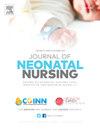保持预防重点:循证指南在减少危重儿童导尿管相关尿路感染中的作用,一项准实验研究
Q2 Nursing
引用次数: 0
摘要
背景,目的导尿管相关性尿路感染(CAUTI)是延长住院时间的重要原因,增加了患者和医院的经济和医疗负担。这也是医院感染防控的重点。然而,目前很少有研究将循证科学发现转化为重症儿童CAUTI防治的临床应用和评估。本研究的目的是探讨循证指南在减少危重儿童导尿管相关尿路感染中的作用。设计一项非随机单单元干预前后研究,对应1型准实验研究。研究对象共纳入50名儿童:25名儿童在指南前被收集为对照组,25名儿童在指南后被收集为研究组。背景:埃及xxx大学儿科重症监护室。方法所有符合条件的儿童非随机分为研究组和对照组。对照组接受常规护理,研究组接受循证护理。结果在导尿管插入24小时内进行评估,直到通过有针对性的查房,重点是遵守循证指南和导尿管相关尿路感染清单。结果循证指南培训、依从性和应用显著降低了临床导尿管相关尿路感染的发生率(24%)(P = 0.004 *)。结论循证指南干预对置管危重患者预后有保护作用。因此,应将其纳入置管危重患者的标准护理中。本文章由计算机程序翻译,如有差异,请以英文原文为准。
Maintaining prevention focus: Effect of evidence-based guidelines in reducing catheter-associated urinary tract infections among critically ill children, A quasi-experimental study
Background & aim
Catheter-associated urinary tract infection (CAUTI) is an important cause of prolonged hospital stay, increasing the economic and medical burden for both patients and hospitals. It is also a key focus of hospital infection prevention and control. However, there are currently few studies that translate evidence-based scientific findings on CAUTI prevention and control into clinical applications and evaluations in critically ill children. The aim of the present study was to investigate the effect of evidence-based guidelines in reducing catheter-associated urinary tract infections among critically ill children.
Design
A before/after non-randomized single-unit intervention study, corresponding to a quasi-experimental study type 1.
Subjects
A total of 50 children were included in the study: 25 children were collected pre-guidelines in the control group, and 25 children were collected post-guidelines in the study group.
Setting
Pediatric Intensive Care Unit at xxx University, xxx, Egypt.
Methods
All eligible children were non-randomly assigned to either the study group or the control group. The control group received routine nursing care, while the study group received care based on evidence-based guidelines. The outcomes were evaluated within 24 h of urinary catheter insertion until its removal through targeted rounds focused on compliance with evidence-based guidelines and a checklist for catheter-associated urinary tract infections.
Results
The evidence-based guidelines training, compliance, and application significantly reduced the occurrence of clinical catheter-associated urinary tract infections (24 %) compared to the control group (64 %) (P = 0.004∗).
Conclusion
The evidence-based guidelines intervention had a protective effect on the outcomes of catheterized critically ill patients. Therefore, it should be integrated into standard nursing care for catheterized critically ill patients.
求助全文
通过发布文献求助,成功后即可免费获取论文全文。
去求助
来源期刊

Journal of Neonatal Nursing
Nursing-Pediatrics
CiteScore
2.00
自引率
0.00%
发文量
143
期刊介绍:
Aims & Scope: This is the practical, bimonthly, research-based journal for all professionals concerned with the care of neonates and their families, both in hospital and the community. It aims to support the development of the essential practice, management, education and health promotion skills required by these professionals. The JNN will provide a forum for the exchange of ideas and information between the range of professionals working in this field; promote cooperation between these professionals; facilitate partnership care with families; provide information and informed opinion; promote innovation and change in the care of neonates and their families; and provide an education resource for this important rapidly developing field.
 求助内容:
求助内容: 应助结果提醒方式:
应助结果提醒方式:


